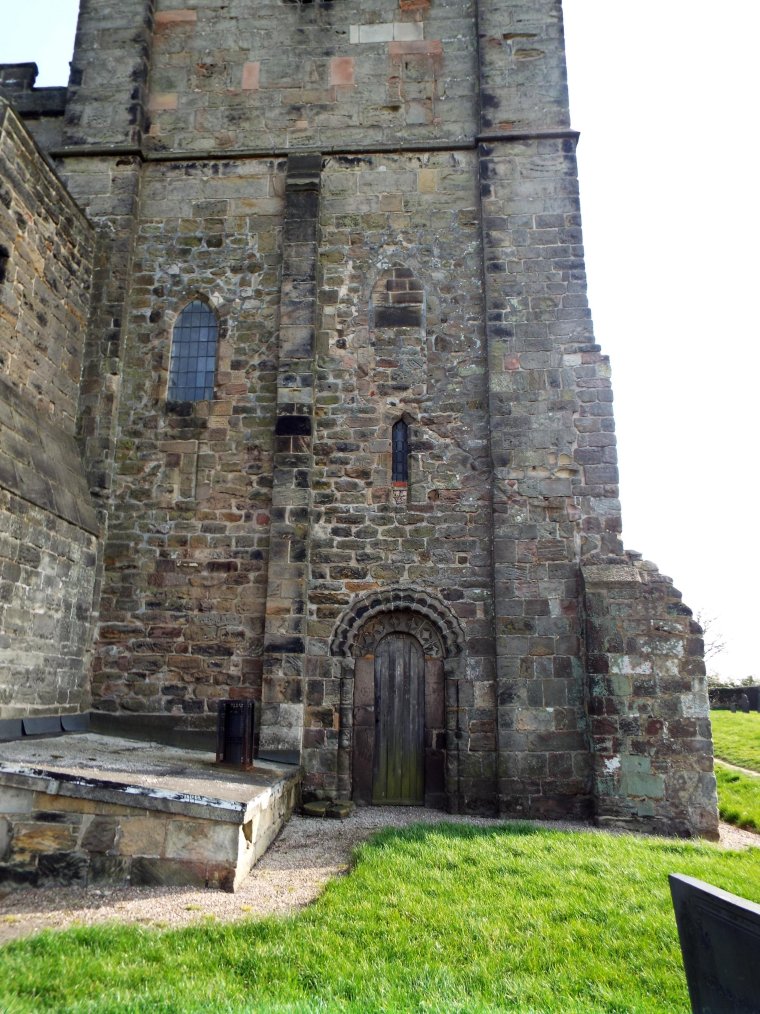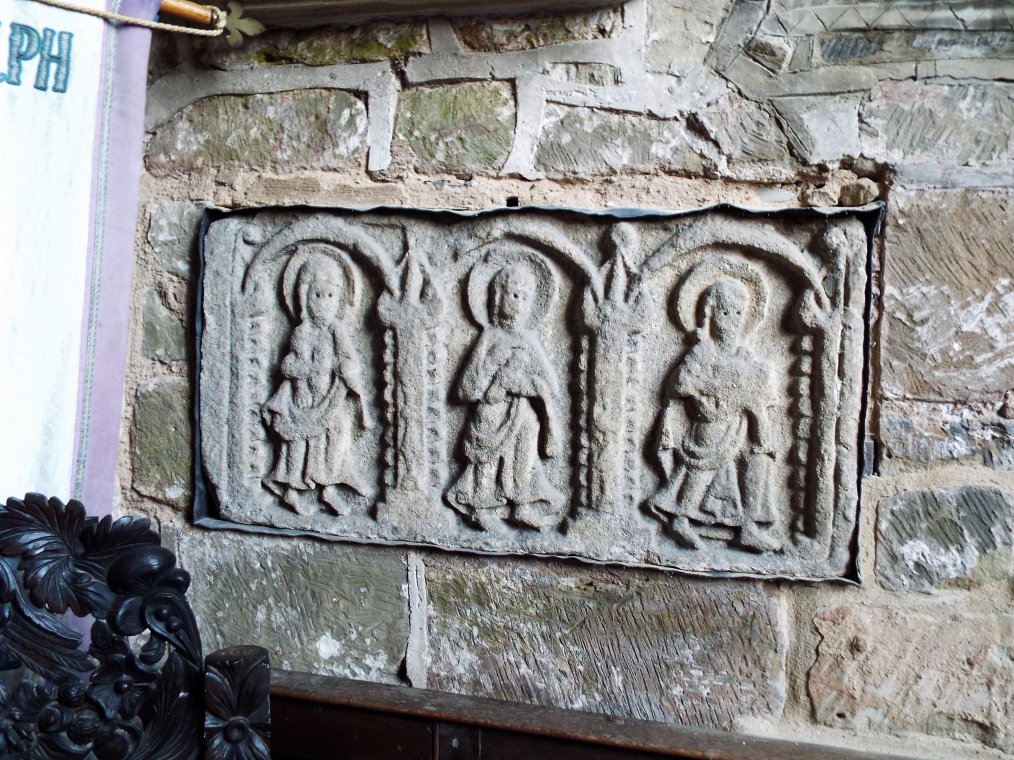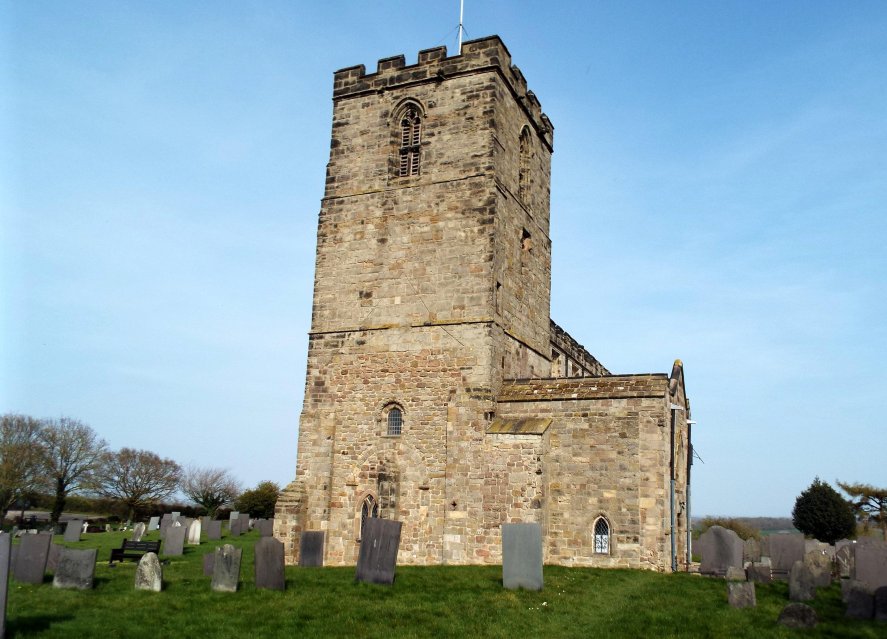Breedon on the Hill
The first church built at Breedon lies within a hillfort 7 miles east of Repton
within the bounds of the Saxon kingdom of Mercia. The monastery
was allegedly founded in the seventh century based on the strength of 2
Anglo Saxon Chronicle entries, one from 1117-21 and the other from
probably the late fourteenth century. Both seem to make use of
older sources. The first under the year 675AD states that:
King Æthelred (675-704/6, d.716) granted to Peterborough minster the lands of Breedon, Repton, Cadney, Swineshead, Heanbyrig, Louth, Shifnal, Costesford, Stratford, Wattlesborough, the Lizard, Aethelhuniglond and Bardney.
While the latter states that Pope Agatho (678-81) recognised various privileges held by Peterborough monastery, namely the lands of Breedon, Repton (Rippingale has also been suggested for Repingas), Cadney (Cedenac), Swineshead (Suinesheved), Heanbyrig, Louth (Lodeshale), Shifnal (Scuffenhalch), Costesford, Stratford (Stretford), Wattlesborough (Wetelleburna), Lizard (Lusgerd), Hethelhuniglond and Barking (not Bardney? Barchanig).
Obviously neither of these late sources actually say anything about the
foundation of any of these churches. Indeed even their
identification is open to dispute in most cases.
The foundation of the church of Breedon seems to have occurred during
the reign of King Æthelred (675-704/6, d.716) and was made by
‘the most religious of the king's princes', one Friduricus who
was lord of Breedon as well as holding lands in Repton (Hrepingas).
Friduric issued 2 charters to the monastery. In the first he had
recorded that he had granted 20 of his men with their lands in Breedon
to Peterborough monastery, with the
consent of Bishop Seaxwulf (bef.676-691/2), on the condition that the
monks appointed an exceptional priest to bring the people of the
district to baptism and evangelical doctrine. The Peterborough monks agreed to this and appointed Hedda to lead the new community.
After this had occurred and Abbot Haedda had taught the surrounding
peoples Christianity with the greatest care, Friduric was so pleased
that he gave the abbot the land of a further 31 men in the land called Repton (Hrepingas)
as was agreed with Bishop Seaxwulf (bef.676-691/2) and King
Æthelred (675-704/6, d.716). Haedda later made a charter as
abbot of Breedon and went on to become bishop of Lichfield in about
691. He died in the period 716 to 727. Later, Archbishop
Tatwine of Canterbury (731-34) was trained at Breedon and became abbot - a position he held until 731. This Breedon should not be mistaken for Bredon (Breodune) in Worcestershire.
Breedon church seems to have been dedicated to St Hardulph from an
early date. According to a list of saints' burials kept at Peterborough
and recorded by Hugh Candidus (d.c.1160), this was actually King
Ærdwulf of Northumbria (796-806, 808-11/30). If this is so,
the first dedication of the abbey is now lost. Possibly some of
the remaining stone panels inset in the later church walls are remnants
of King Ærdwulf's tomb or shrine. According to the same
list 3 other saints are buried here, the monks Beonna and Cotta as well
as St Frethericus. Presumably the latter is synonymous with
Friduric, the granter of Breedon to the monks in the late seventh
century.
Just like Brixworth, the church is
thought to have been a victim of the Great Heathen army in 870.
The monastery was apparently operational a century later when in 966-7
King Edgar (957-75) granted Bishop Aethelwold of Winchester (963-84) lands in Wilston, Diseworth and Aetheredes Dun
for the church at Breadone. Despite this, Breedon does not appear
in Domesday, although the surrounding manors of Worthington and Tonge
were held by Henry Ferrers of Oakham and Tutbury
(d.1089). Before 1122 the church became a cell of the Yorkshire
house of Nostell priory, having been given by Earl Robert Ferrers of
Nottingham [and Derby] (d.1139). The grant included the church of
St Mary and St Hardulf of Bredona with 4 virgates of land and Robert's tithes, his men of Tonge, Andrews Church [Kegworth] and Wilson? (Wiwelestona) as well as the chapels of Worthington (Wrdintona) and Staunton Harold and the tithes of Newbold (Neubolt) and Diseworth (Diceswrda) with 20s a year from each of the mills of Crakemarsh (Crakemers, Staffordshire), Tonge, West Leake (Westleka, Nottinghamshire), £2 from the soke of Stapleford and a herdewicam in Heathcote (Hethcote) next to Hartington (Hertedona) in the Peak District.
For a good description and excellent photographs of the church, freize and ‘shrine/tomb' please refer to the Great English Churches
website. Also bear in mind that the dates given in the above
Great English Churches article are supposition only and other
interpretations are easily possible.


Copyright©2022
Paul Martin Remfry



